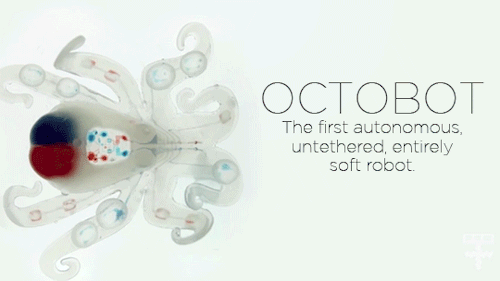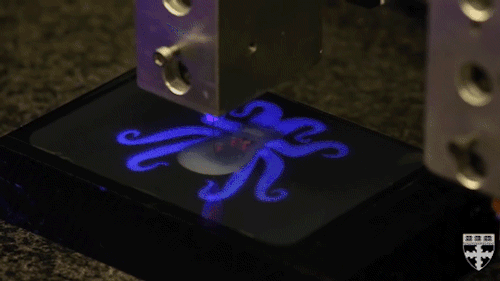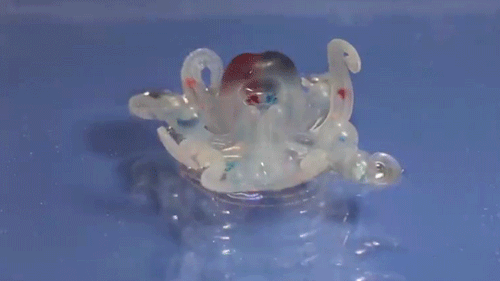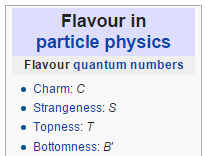Scientists Have Figured Out How To Use Nuclear Waste As An Energy Source, Converting Radioactive Gas

Scientists have figured out how to use nuclear waste as an energy source, converting radioactive gas into artificial diamonds that could be used as batteries.
These diamonds, which are able to generate their own electrical current, could potentially provide a power source for thousands of years, due to the longstanding half-life of the radioactive substances they’re made from.
“There are no moving parts involved, no emissions generated, and no maintenance required, just direct electricity generation,” says geochemist Tom Scott from the University of Bristol in the UK.
“By encapsulating radioactive material inside diamonds, we turn a long-term problem of nuclear waste into a nuclear-powered battery and a long-term supply of clean energy.”
Continue Reading.
More Posts from In-pursuit-of-knowledge-blog and Others
Cultures are defensive constructions against chaos, designed to reduce the impact of randomness on experience.
Mihaly Csikszentmihalyi (via inthenoosphere)


Something for my dad from the nature trade - a piece of Precambrian-era petrified wood! I thought he would enjoy it and he does, it’s a truly lovely little piece.
it is absolutely my kind of thing. so much work, such intricate pieces! I would’ve loved to be on the team that put this together.



Creepy or adorable? Researchers at Harvard University have demonstrated the first autonomous, untethered, entirely soft robot: the octobot.
Instead of being controlled by electronics, the robot’s logic board is powered by chemical reactions and fluid passing along tiny channels. Scientist have struggled to create completely soft robots because rigid components like circuit boards, power sources and electronic controls are difficult to replace.
Learn more about the octobot and soft robotics here and see the full study published in Nature here.
Videos Credit: Harvard SEAS/Image Credit Lori Sanders

Flyover of Jupiters North Pole in Infrared via NASA https://ift.tt/2EM34s1
Technology for the blind!
NSF-funded researchers at Texas A&M University have developed STAAR (Situated Touch Audio Annotator And Reader) e-reader that enables blind readers to read the same text sighted readers do. The system allows a user to scan the text with their fingers to hear the words. For more information: https://bit.ly/2Fm1HSU
Video credit: Texas A&M University

i want to play an rpg where these are my four stats
Can we talk? Starting a career in science communication
“Here is how science is relevant and has an impact on your life, and more importantly, here is how it can empower you.” ~ Mónica Feliú-Mójer
In this week’s featured podcast, “Sci on the Fly,” our own AAAS Science and Technology Policy fellow Allyson Kennedy interviews neurobiologist Mónica Feliú-Mójer, communications and science outreach director at Ciencia Puerto Rico.
We’ll let them take it from here: bit.ly/2ITDur3

Above: Mónica I. Feliú-Mójer delivering the keynote talk at the University of North Carolina STEM Diversity conference, Credit: Katherine Gale Stember Feliú-Mójer is also associate director for diversity and communication training at NSF-funded iBiology, where she produced a series of videos that is rethinking the narrative of “diversity in science”: https://goo.gl/3xmTET Below: Allyson Kennedy, Ph.D., a developmental biologist and 2017-18 Science & Technology Policy fellow at NSF, in The Dickinson Lab at Virginia Commonwealth University, where she did her graduate and postdoctoral work, Credit: Allyson Kennedy, Ph.D.
https://www.nsf.gov/od/oia/activities/aaasfellows/bios/kennedy.jsp


Above: Kennedy at Virginia Commonwealth University, where she led one arm of a multidisciplinary project investigating the effects of e-cigarettes on embryonic development, Credit: Leah Small, VCU Public Affairs https://www.aaaspolicyfellowships.org/ Below: Feliú-Mójer filming a segment for Univision that featured Latinxs in higher education. She is showing the camera the model organism she used for her PhD research, the nematode C. elegans, Credit: Mónica I. Feliú-Mójer, Ph.D

9 Ocean Facts You Likely Don’t Know, but Should
Earth is a place dominated by water, mainly oceans. It’s also a place our researchers study to understand life. Trillions of gallons of water flow freely across the surface of our blue-green planet. Ocean’s vibrant ecosystems impact our lives in many ways.
In celebration of World Oceans Day, here are a few things you might not know about these complex waterways.
1. Why is the ocean blue?

The way light is absorbed and scattered throughout the ocean determines which colors it takes on. Red, orange, yellow,and green light are absorbed quickly beneath the surface, leaving blue light to be scattered and reflected back. This causes us to see various blue and violet hues.
2. Want a good fishing spot?

Follow the phytoplankton! These small plant-like organisms are the beginning of the food web for most of the ocean. As phytoplankton grow and multiply, they are eaten by zooplankton, small fish and other animals. Larger animals then eat the smaller ones. The fishing industry identifies good spots by using ocean color images to locate areas rich in phytoplankton. Phytoplankton, as revealed by ocean color, frequently show scientists where ocean currents provide nutrients for plant growth.
3. The ocean is many colors.

When we look at the ocean from space, we see many different shades of blue. Using instruments that are more sensitive than the human eye, we can measure carefully the fantastic array of colors of the ocean. Different colors may reveal the presence and amount of phytoplankton, sediments and dissolved organic matter.
4. The ocean can be a dark place.
About 70 percent of the planet is ocean, with an average depth of more than 12,400 feet. Given that light doesn’t penetrate much deeper than 330 feet below the water’s surface (in the clearest water), most of our planet is in a perpetual state of darkness. Although dark, this part of the ocean still supports many forms of life, some of which are fed by sinking phytoplankton.
5. We study all aspects of ocean life.

Instruments on satellites in space, hundreds of kilometers above us, can measure many things about the sea: surface winds, sea surface temperature, water color, wave height, and height of the ocean surface.
6. In a gallon of average sea water, there is about ½ cup of salt.

The amount of salt varies depending on location. The Atlantic Ocean is saltier than the Pacific Ocean, for instance. Most of the salt in the ocean is the same kind of salt we put on our food: sodium chloride.
7. A single drop of sea water is teeming with life.

It will most likely have millions (yes, millions!) of bacteria and viruses, thousands of phytoplankton cells, and even some fish eggs, baby crabs, and small worms.
8. Where does Earth store freshwater?

Just 3.5 percent of Earth’s water is fresh—that is, with few salts in it. You can find Earth’s freshwater in our lakes, rivers, and streams, but don’t forget groundwater and glaciers. Over 68 percent of Earth’s freshwater is locked up in ice and glaciers. And another 30 percent is in groundwater.
9. Phytoplankton are the “lungs of the ocean”.

Just like forests are considered the “lungs of the earth”, phytoplankton is known for providing the same service in the ocean! They consume carbon dioxide, dissolved in the sunlit portion of the ocean, and produce about half of the world’s oxygen.
Want to learn more about how we study the ocean? Follow @NASAEarth on twitter.
Make sure to follow us on Tumblr for your regular dose of space: http://nasa.tumblr.com.
-
 fallen-starr liked this · 5 months ago
fallen-starr liked this · 5 months ago -
 knivez-izaclownnow liked this · 7 months ago
knivez-izaclownnow liked this · 7 months ago -
 takato1993 reblogged this · 9 months ago
takato1993 reblogged this · 9 months ago -
 asunnydreamer liked this · 9 months ago
asunnydreamer liked this · 9 months ago -
 views-from-within reblogged this · 11 months ago
views-from-within reblogged this · 11 months ago -
 murnswhyte liked this · 1 year ago
murnswhyte liked this · 1 year ago -
 cantthunkofaname liked this · 1 year ago
cantthunkofaname liked this · 1 year ago -
 brennanes liked this · 1 year ago
brennanes liked this · 1 year ago -
 kaleidoscopicskunk reblogged this · 1 year ago
kaleidoscopicskunk reblogged this · 1 year ago -
 whatisrugbyeven liked this · 1 year ago
whatisrugbyeven liked this · 1 year ago -
 calicotomcat reblogged this · 1 year ago
calicotomcat reblogged this · 1 year ago -
 jnbdulke liked this · 1 year ago
jnbdulke liked this · 1 year ago -
 crow-ked reblogged this · 1 year ago
crow-ked reblogged this · 1 year ago -
 lady-tempest reblogged this · 1 year ago
lady-tempest reblogged this · 1 year ago -
 capblaster liked this · 1 year ago
capblaster liked this · 1 year ago -
 gogolswife reblogged this · 1 year ago
gogolswife reblogged this · 1 year ago -
 fyodorswife liked this · 1 year ago
fyodorswife liked this · 1 year ago -
 totallyhealthyobsession reblogged this · 1 year ago
totallyhealthyobsession reblogged this · 1 year ago -
 galatikid reblogged this · 1 year ago
galatikid reblogged this · 1 year ago -
 outofsightoutofmymind liked this · 1 year ago
outofsightoutofmymind liked this · 1 year ago -
 the-librarian-angel reblogged this · 1 year ago
the-librarian-angel reblogged this · 1 year ago -
 qidynamics reblogged this · 1 year ago
qidynamics reblogged this · 1 year ago -
 qidynamics liked this · 1 year ago
qidynamics liked this · 1 year ago -
 kenaskaran reblogged this · 1 year ago
kenaskaran reblogged this · 1 year ago -
 wolfsong9 reblogged this · 1 year ago
wolfsong9 reblogged this · 1 year ago -
 wolfsong9 liked this · 1 year ago
wolfsong9 liked this · 1 year ago -
 shypeachrunaway liked this · 1 year ago
shypeachrunaway liked this · 1 year ago -
 sirkaj reblogged this · 1 year ago
sirkaj reblogged this · 1 year ago -
 paroka liked this · 1 year ago
paroka liked this · 1 year ago -
 tinypizzakidthing liked this · 1 year ago
tinypizzakidthing liked this · 1 year ago -
 regleh liked this · 1 year ago
regleh liked this · 1 year ago -
 sunlight-is-heavens-warm-kiss liked this · 1 year ago
sunlight-is-heavens-warm-kiss liked this · 1 year ago -
 gothfirefaerie reblogged this · 1 year ago
gothfirefaerie reblogged this · 1 year ago -
 mrrubbersuitman liked this · 1 year ago
mrrubbersuitman liked this · 1 year ago -
 ange1w1ngs liked this · 1 year ago
ange1w1ngs liked this · 1 year ago -
 aeorys reblogged this · 1 year ago
aeorys reblogged this · 1 year ago -
 clearphysicssciencedragon liked this · 1 year ago
clearphysicssciencedragon liked this · 1 year ago -
 dragonncat reblogged this · 1 year ago
dragonncat reblogged this · 1 year ago -
 iknewidfindmeinhere reblogged this · 1 year ago
iknewidfindmeinhere reblogged this · 1 year ago -
 iknewidfindmeinhere liked this · 1 year ago
iknewidfindmeinhere liked this · 1 year ago -
 sozinho-e-bem-melhor liked this · 1 year ago
sozinho-e-bem-melhor liked this · 1 year ago -
 mykaeljay reblogged this · 1 year ago
mykaeljay reblogged this · 1 year ago -
 mykaeljay liked this · 1 year ago
mykaeljay liked this · 1 year ago -
 darryljbarrios reblogged this · 1 year ago
darryljbarrios reblogged this · 1 year ago -
 darryljbarrios liked this · 1 year ago
darryljbarrios liked this · 1 year ago
Once I was made of stardust. Now I am made of flesh and I can experience our agreed-upon reality and said reality is exciting and beautiful and terrifying and full of interesting things to compile on a blog! / 27 / ENTP / they-them / Divination Wizard / B.E.y.O.N.D. department of Research and Development / scientist / science enthusiast / [fantasyd20 character]
162 posts


